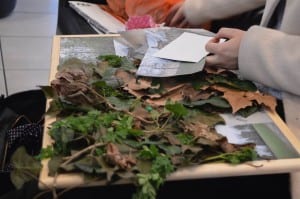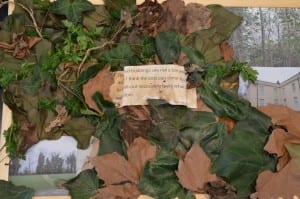Photography is the science, art and practice of creating durable images by recording light or other electromagnetic radiation, either electronically by means of an image sensor, or chemically by means of a light-sensitive material such as photographic film. Therefore, my groups ideas of how we can relate our experience to our audience have changed. Instead of taking our audience/participants on a tour of Lincoln, through audio only, we have decided to ingratiate in the use of a visual stimuli. This idea came to us when I recorded our wander ‘destination map’ on my GoPro, in order to add the audio over the top, so we could asses where we were in relation to the audio script and in reality.
When reviewing the footage with Karen, she directed us towards the notion of a multi-media experience, In which our audience listen to our vocal information/guidance, whilst viewing what we saw whilst on our own tour. This type of media integrated work reminded us of the performance format for ‘Uncle Roy’, by Blast Theory. This work by blast theory involves participants buying tickets to become part of the game. They sit in an office area on a computer playing virtually and wandering around the city. The initiators of this ‘performance’ then walk around the city with a walkie-talkie and a hand held computer, on which they can see the virtual representatives in real time. Their objective is to find as many people as they can, once found, the participants are ‘out of the game’. Obviously, our site specific work wouldn’t become a game, by in which we try and find our participants, but one in which our participants can see what was happening and what it was like when we partook on our destination specific walk.
we thus thought that taking our participants on the destination ‘tour’ with us virtually would help them understand their surroundings as we did and hopefully let them see what has changed in the time between our tour and theirs. As ‘The city is an arena where the unfamiliar flourishes, where the disjointed and the disrupted are constantly threatening to overwhelm us. It is also a zone of possibility; new encounters.’ (http://www.blasttheory.co.uk/)Whilst our participants are on our ‘tour’ they will experience the sights we saw whilst hearing the group and I talk them through the area, its past, present and the ever near future, the tour to our site will also help our audience understand our stimuli as they will be guided to places which have significance to our site, these areas will become apparent once on the tour and the site is completed.
Citation page:
http://www.blasttheory.co.uk/projects/uncle-roy-all-around-you/

